Bath's railway heritage is an integral part of the city's history as a spa destination, providing easy access for visitors from across the country. Read on to discover the history of railways in Bath, and how you can still enjoy their legacy today.
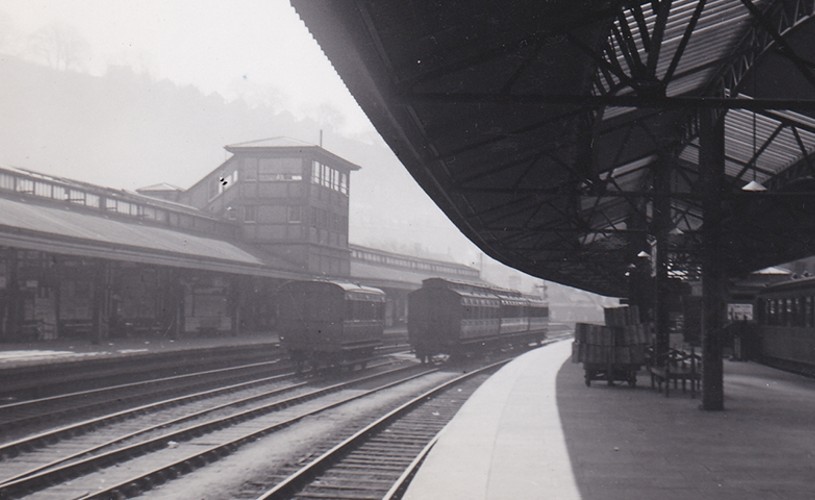
Image: Bath Spa Station and Signal Box in the 1930s - Credit STEAM Museum of the GWR, Swindon
Bath Spa Station
Built in 1840 by Brunel for the Great Western Railway, Bath Spa Station is a Grade II* listed building, and serves as Bath’s mainline station connecting to Bristol and London. Brunel’s design used a variety of architectural styles, including the gothic viaduct, classical bridges at Sydney Gardens, and the Elizabethan-style station. Bath once had several train stations, yet today the only other open station in Bath is Oldfield Park, a small commuter station in a western suburb, with limited services to Bristol and to Bath Spa, and onward stations.
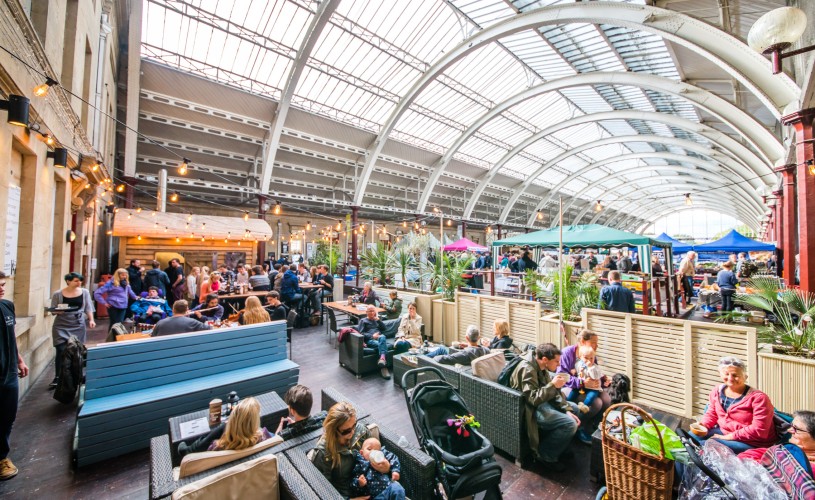
Image: Market stalls at Green Park Station
Green Park Station
Originally known as Queen Square Station, Green Park operated for 100 years until its closure in 1966. Since then, it has been restored as a retail, market and events space. Below the station is a complex route and system of arches, tunnels and cellars linking up beneath Green Park Station. Local traders who use the cellars have said to still hear ghostly whistles and blast of steam late at night.
Green Park Station proudly hosts the UK’s first ever Farmers’ Market. Every Saturday local producers and farmers pack out the market square stocking cheese, cider, bread, olives, fruits, vegetables, wild venison, bacon, sausages, cakes, eggs, charcuterie boards and everything in between. The markets host a hand-picked and creative collection of traders, making it easy for you to enjoy a one-of-a-kind shopping experience. The popular independent live music restaurant Green Park Brasserie specialises in locally sourced food with free live music four evenings a week.
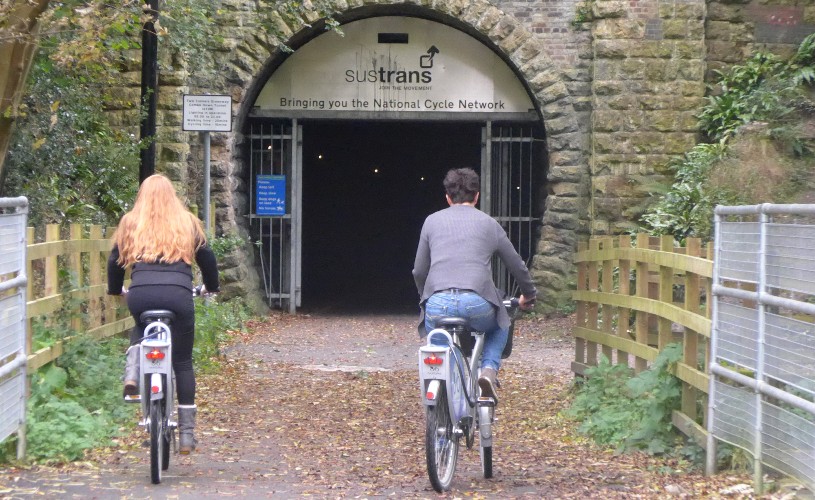
Image: Cyclists on the Two Tunnels Greenway
Two Tunnels Greenway
The Two Tunnels is a relatively flat walking and cycling route that gives you a wonderful view of Bath's Georgian crescents before it leaves the city behind. The path is a four-mile stretch of disused railway line running through the Linear Park on the south side, to the disused Devonshire tunnel at Bloomfield. The railway closed as a through route in March 1966 and physical work started on the new path at Devonshire tunnel in 2010.
The Two Tunnels route eventually opened in 2013. Once out of the Devonshire tunnel you emerge into a deep, wooded valley as the route leaves Lyncombe Vale and heads underground into Combe Down Tunnel, and then over the renovated Tucking Mill viaduct. At over one mile long, the Combe Down tunnel is the longest cycling and walking tunnel in Britain and features an interactive light and sound installation.
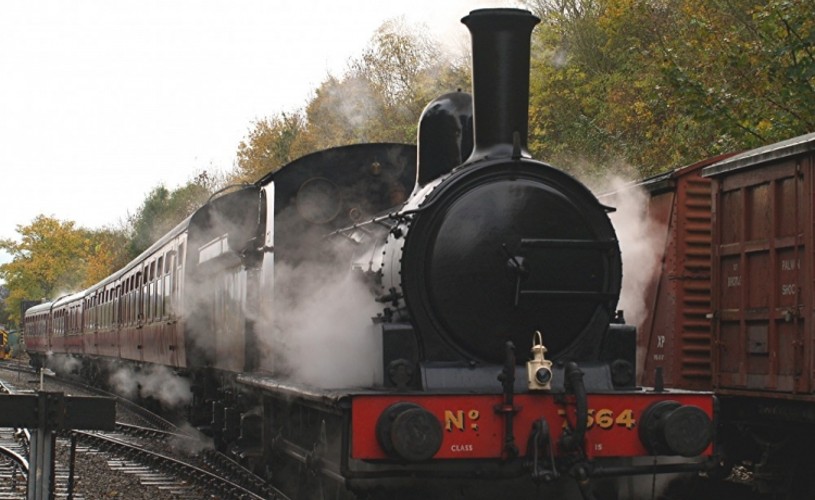
Image: Steam Train at Avon Valley Railway
Avon Valley Railway
Avon Valley Railway is a lovingly restored section of the Midland Railway branch line. Volunteers have re-laid a three-mile section of track and carefully restored locomotives and carriages so that the sound of steam can once again be heard along the Avon Valley. The railway is part of the otherwise-dismantled Midland Railway Mangotsfield and Bath Branch Line, which was closed during the late 1960s as a result of the Beeching cuts and due mainly to the Great Western Railway being just a few miles to the south, which also connected Bristol and Bath.
Begin your visit at the beautifully restored Victorian station at Bitton, and take a ride in a heritage carriage behind a steam or diesel locomotive whilst admiring idyllic views across the Avon Valley. Enthusiasts can even book driver experience courses for the opportunity to take the controls on a six-mile trip through the Avon Valley.
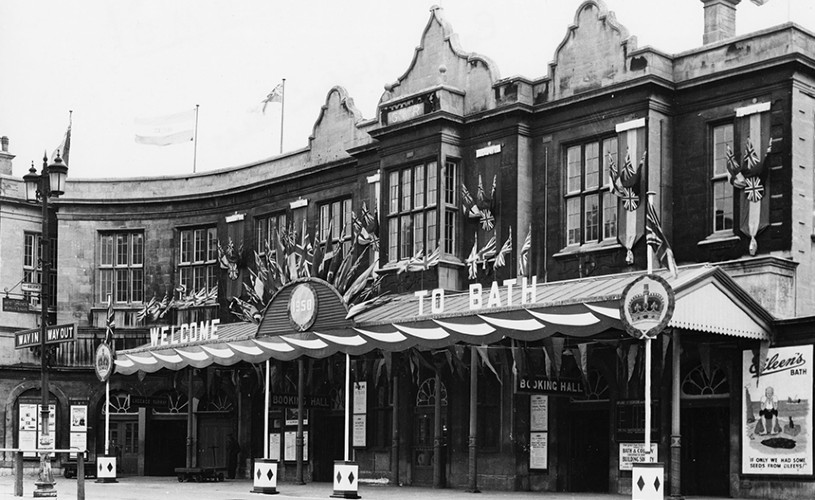
Image: Bath Spa Station, decorated for the visit of HRH Princess Elizabeth on 3rd May 1950. Credit STEAM Museum of the GWR, Swindon
Bristol and Bath Railway Path
The Bristol & Bath Railway Path was constructed on the track bed of the former Midland Railway which closed for passenger traffic at the end of the 1960s. Between 1979 and 1986, the railway line was converted into the Railway Path. The Path is many things to many people – an integral commuting route, an attractive leisure path and an important wildlife corridor. Ride, see artworks and enjoy the landscape.
The path also features a variety of sculptures (including a drinking giant) and working steam engines at the old train station at Bitton. Some of the former stations along the Path are still popular stopping points. They are also a source of historical interest, especially to rail enthusiasts.
Explore more about Bath's spa heritage.
Related
Comments
Comments are disabled for this post.





